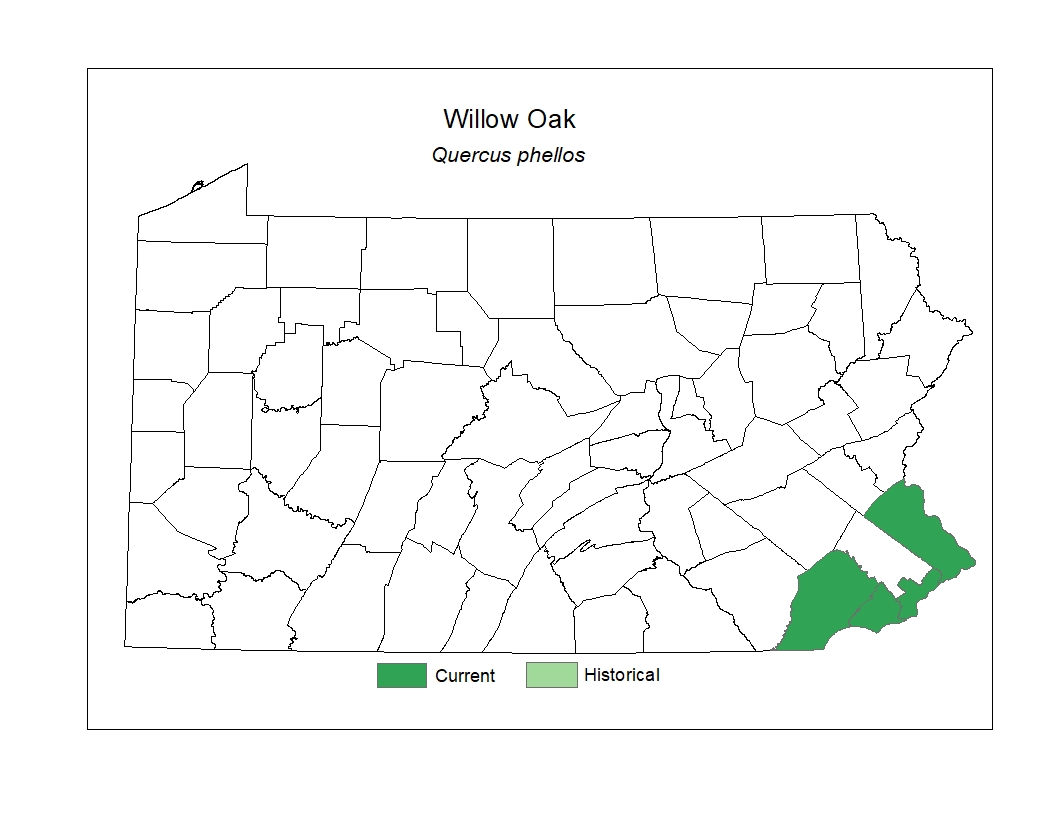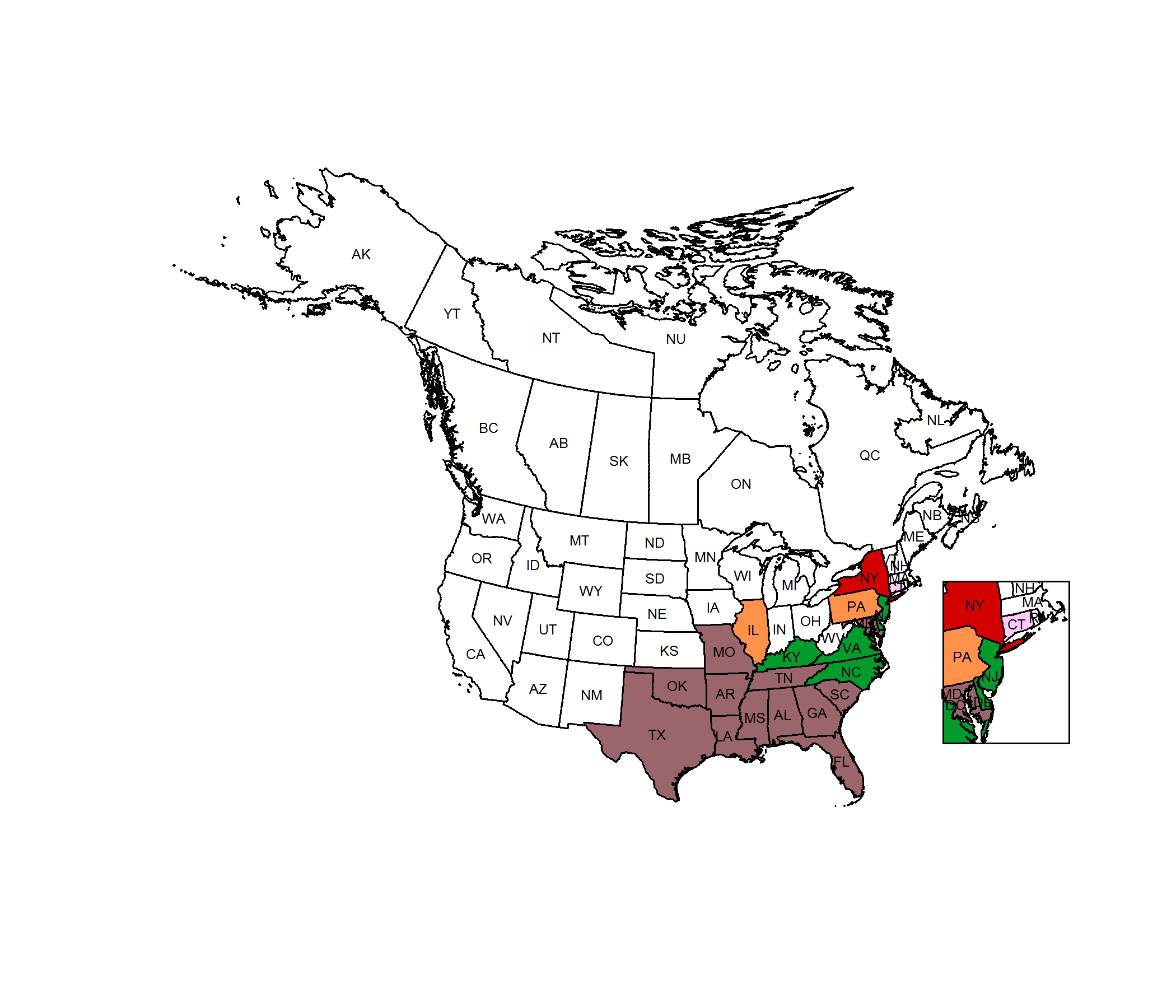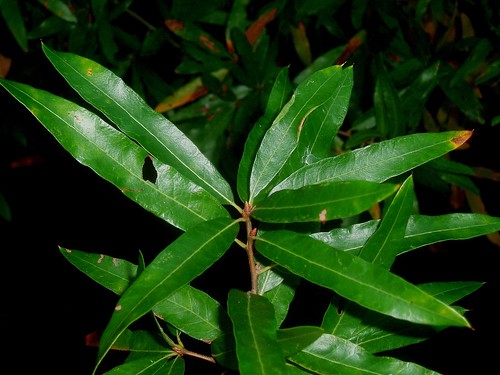 Species Factsheets
Species Factsheets
Quercus phellos
Willow Oak
State Status: Pennsylvania Endangered (PE)
PBS Status: Pennsylvania Endangered (PE)
Federal Status:
Global Rank: G5
![]() rank interpretation
rank interpretation
State Rank: S2
Did You Know?
The seeds can be dried and ground into a powder for use as a thickening in stew or mixed with other ingredients to make bread.
Description
Willow oak (Quercus phellos) is a deciduous tree that may grow to 25m in height. The bark is dark gray and furrowed. The leaves are alternately arranged, lanceshaped, without the lateral teeth and lobes typical of most Pennsylvania species of oaks, 5-10cm long and less than 2cm wide, bristle-tipped, and usually hairless on both surfaces at maturity. The flowers, appearing from late April to May, are unisexual, with female flowers occurring singly or in pairs and male flowers arranged in much more conspicuous clusters of long, drooping catkins. The fruit is an acorn averaging about 1cm in length, and is covered about ¼ to ½ of its length by a scaly saucer-like cup.
Rank Justification
Imperiled in the nation or state because of rarity due to very restricted range, very few populations (often 20 or fewer), steep declines, or other factors making it very vulnerable to extirpation from the nation or state.
Habitat
Willow oak grows in damp to swampy woods, thickets, and bottomlands.
Survey Dates
Leaves distinctive
Distribution
In Pennsylvania, it represents a southerly species and has been documented historically in a few southeastern counties.

Threats
Some populations of willow oak are threatened by habitat loss, invasive species, and in some locations, excessive browsing by deer.
Management
Establishing buffers around fragmented forested habitat and removal of invasive species will help to maintain populations.
Conservation Status Map


NatureServe. 2017. NatureServe Explorer: An online encyclopedia of life [web application]. Version 7.1. NatureServe, Arlington, Virginia. Available https://explorer.natureserve.org.
https://www.pfaf.org/user/Plant.aspx?LatinName=Quercus+phellos
- NatureServe. 2018. NatureServe Explorer: An online encyclopedia of life [web application]. Version 7.1. NatureServe, Arlington, Virginia. Available at https://www.natureserve.org/explorer
- Pennsylvania Natural Heritage Program. 2018.
- Rhoads, A.F. and W.M. Klein, Jr. 1993. The Vascular Flora of Pennsylvania. American Philosophical Society, Philadelphia, Pennsylvania. Rhoads, A.F. and T.A. Block.
- 2007. The Plants of Pennsylvania: An Illustrated Manual. 2nd edition. University of Pennsylvania Press, Philadelphia, Pennsylvania.







